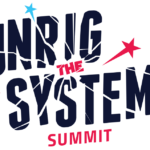Overview
Overview:
The purpose of this toolkit is to provide city staff and community members with practical guidance to support the development of small-scale parks, called parklets. Parklet programs and projects are spreading quickly across the nation, from San Francisco to New York and other cities profiled in the toolkit. This decision support toolkit is designed specifically to facilitate the development of parklet projects in the city of Los Angeles and encourage a parklet program that creates an institutionalized pathway for their installation. Despite the focus on Los Angeles, the program case studies, project guidelines, and other best practices presented in this toolkit are easily transferable to other communities across the nation.
The term “parklet” was first used in San Francisco to represent the conversion of an automobile parking space into a mini-park for passive recreation. This toolkit expands this basic definition to include other spaces formerly occupied by cars as well as spaces that can also facilitate active recreation. Parklets emerge from the low-cost conversion of small and under utilized residual spaces originally devoted to cars into spaces for the passive or active recreation of people. Parklets are typically created by building a platform on the pavement to extend the sidewalk space, and retrofitting it with benches, planters, tables and chairs, umbrellas, and bike racks. In the case of active recreation parklets, exercise machines can be bolted to the platform.
Spud’s Thoughts:
Parklets are a really simple way to generate some excitement in your community from the ground up. One of my first nonprofits used to set up a parklet frequently and use it as our temporary outdoor office during nice days. It was an amazing way to get outside of our bubble and interact with folks in a neutral space.



